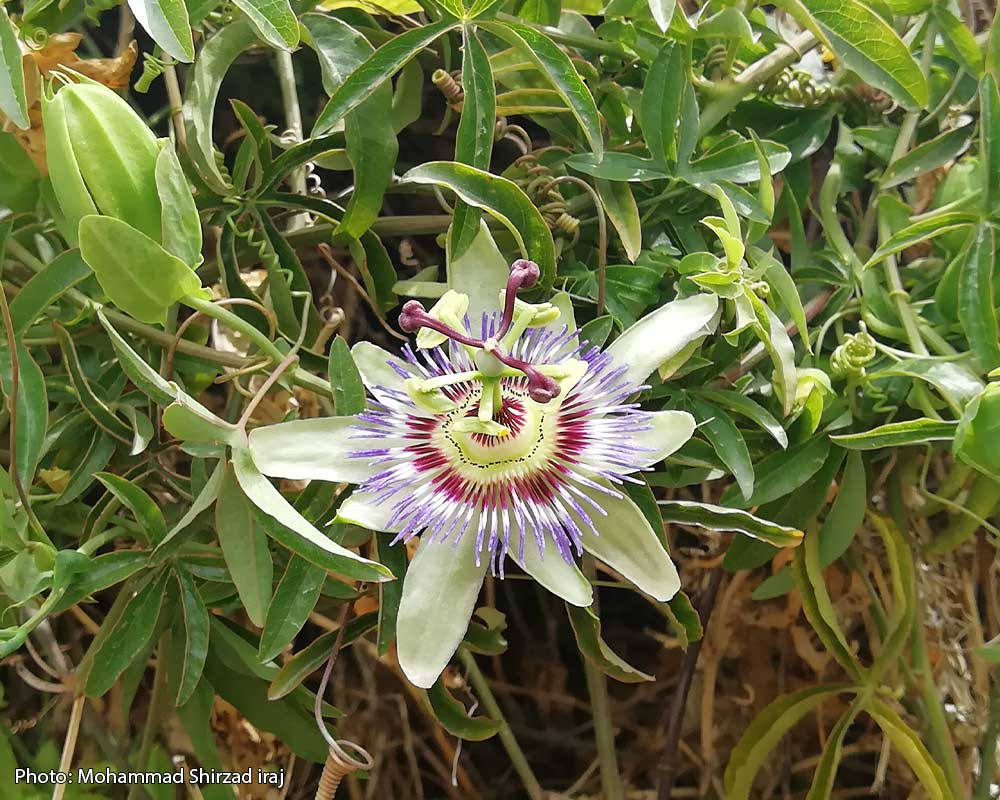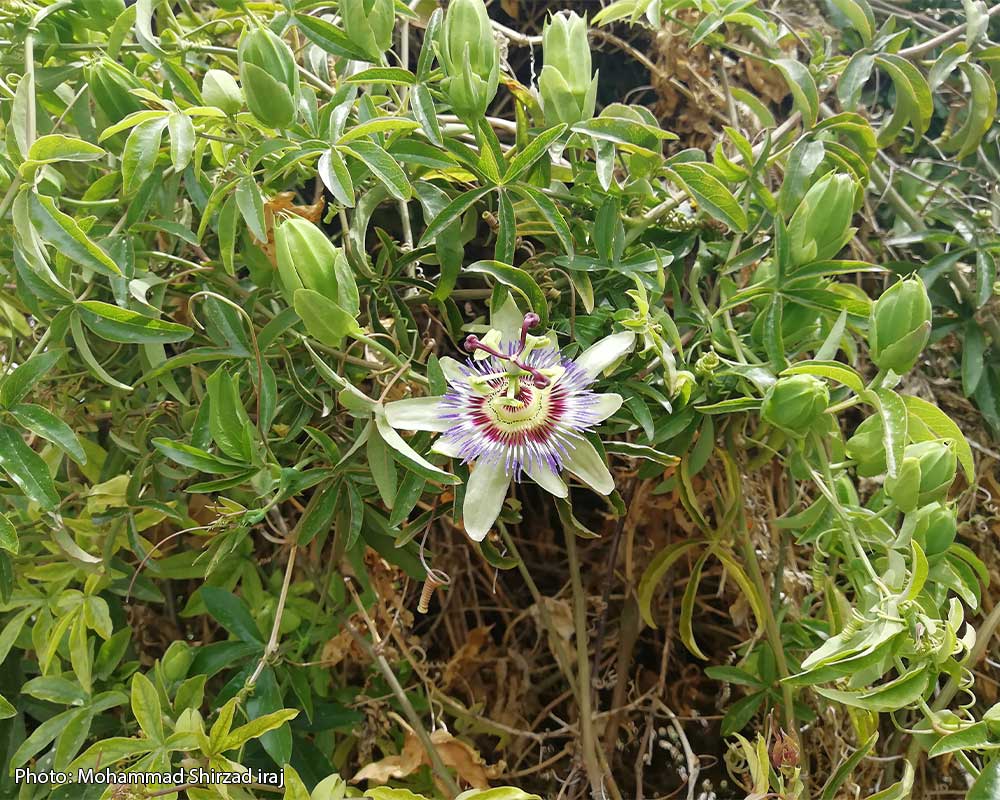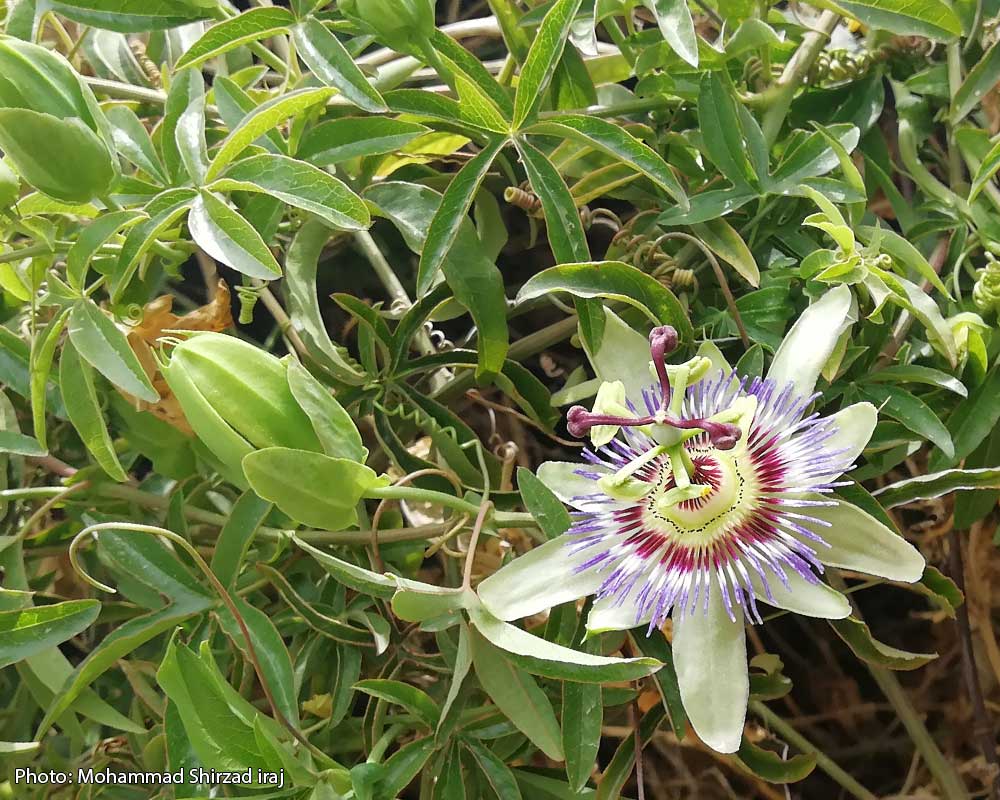Passiflora caerulea
Description
Kingdom: Plantae
Phylum: Magnoliophyta
Class: Angiospermae
Order: Malpighiales
Family: Passifloraceae
Genus: Passiflora
Species: Passiflora caerulea
Passiflora caerulea is a woody vine capable of growing to 25 metres (82 ft) high where supporting trees are available. The leaves are alternate, palmately five-lobed (sometimes three, seven, or nine lobes), and are up to 10 centimetres (3.9 in) in length while being linear-oblong shaped. The base of each leaf has a flagellate-twining tendril 5–10 centimetres (2.0–3.9 in) long, which twines around supporting vegetation to hold the plant up.
The flower is complex, about 10 centimetres (3.9 in) in diameter, with the five sepals and petals similar in appearance, whitish in colour, surmounted by a corona of blue or violet filaments, then five greenish-yellow stamens and three purple stigmas. The fruit is an oval orange-yellow berry, 6 centimetres (2.4 in) long by 4 centimetres (1.6 in) in diameter, containing numerous seeds. It is edible to humans when ripe, but tends to have an undesirable flavour unless allowed to fully ripen in a warm climate and fall naturally from the vine, when it has a mild blackberry flavour, though with a lower sugar content than commonly eaten species.


